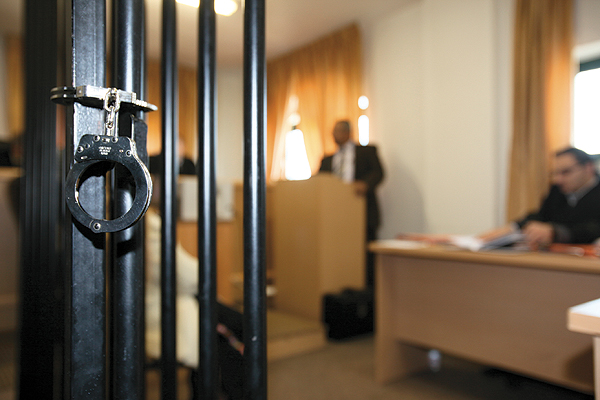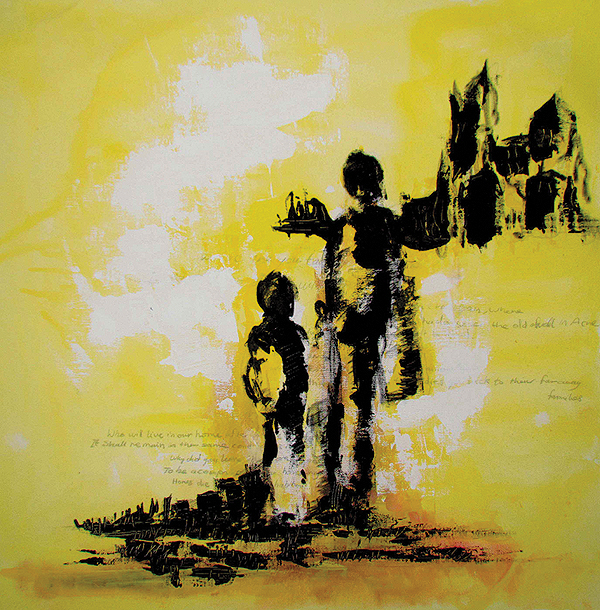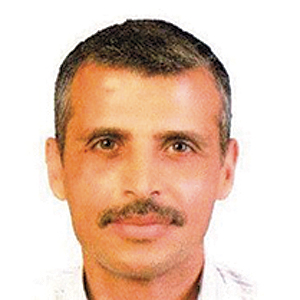
There is no doubt that juvenile delinquency exists in all societies, yet at different and varying levels. Its scope, however, depends on several factors, prominent among them the social and economic conditions under which the juveniles are living.i Unfortunately, there exists no actual treatment for this phenomenon, which could be implemented either by the government or civil-society organizations.
The Rabi’a Institution, run by the Ministry of Social Affairs, is the only place in the Gaza Strip that is authorized to detain juveniles. It receives about 800 juveniles annually and houses about 40 juveniles at any given time; however, the number may reach up to 60. As such overcrowding exceeds the capacity of Rabi’a, it also affects the various reform programs that are held inside the institution and in which the juveniles take part until they are set free. Furthermore, the institution suffers logistical difficulties, mainly with regards to the vocational rehabilitation of its staff.
♦ Selected International Conventions
on Juvenile Justice• The United Nations Minimum Standard Rules for the Administration of Juvenile Justice (Beijing Rules, 1984) outline evaluative policies for juveniles and focus on the procedures of investigation, prosecution, and rehabilitation of juveniles.
• The United Nations Guidelines for the Prevention of Juvenile Delinquency (Riyadh Guidelines, 1990) focus on the preventive side and consider upbringing in their recommendations on social policy, legislation, management of juvenile justice, and the required measurements to protect juveniles who have been neglected and mistreated or are considered endangered or at social risk.
• The UN Convention on the Rights of the Child (1989) set forth specific guidelines on how to deal with delinquents and how to provide for their protection; it paved the way for a comprehensive policy regarding juvenile justice.
Despite the remarkable developments that have been witnessed recently in the field of juvenile justice (JJ) in the Gaza Strip, the work is still incomplete and needs more coordination. More effort are required within the community, taking into account the best interest of juveniles who have been victims of tough social and economic circumstances. Setting up a juvenile court in the Rabi’a Institution was the most significant development in this regard. The official opening of Rabi’a was on June 25, 2014, and to date, 14 court sessions have been held with the presence of probation officers from various human rights organizations.
Furthermore, resolutions issued by the attorney general in 2013 and 2014 have contributed to an improvement of the policies applied in JJ. Such policies include, first, that a juvenile is arrested only if all attempts at an amicable and restorative solution have failed; second, that a juvenile must not be arrested for committing a minor crime; and third, that any interrogation must be carried out in the presence of a probation officer whose report must be attached to the juvenile’s file when submitted before the court. Also, police officers are allowed to make contact with informal justice actors, such as mukhtars or islah men or women,* so as to release the juvenile without referring him/her to public prosecution.

A Juvenile Justice Committee (JJC) was formed in 2013 in Gaza, coordinated by the Palestinian Center for Democracy and Conflict Resolution (PCDCR), which oversees and coordinates the committee’s works. JJC includes most of the official and non-official concerned parties in the field, such as the Ministry of Social Affairs, the judiciary, prosecutors, police, reform committees, and Terre des hommes (Tdh)-Switzerland. The committee periodically meets to coordinate the efforts of the individual parties in order to ensure access to justice for juveniles.
Juvenile police officers have recently been appointed in every police station in line with a decision taken by the police chief. While this is an important step in the right direction, it is still insufficient. A fully-fledged Juvenile Police Unit should be instated within the structure of the police to assure that a juvenile police officer is present during all shifts in all police stations.

In the judiciary, a judge was assigned to hear juvenile cases. However, more efforts should be made to establish a specialized judiciary within the current judicial system in order to assure that the best interest of juveniles is taken into account during both arrest and trial.
• Juvenile Justice Laws Applicable in the Gaza Strip
• Juveniles Offenders Law (1937)
• Juveniles Procedure Law (1938)
• Criminal Procedures Law No. 3 (2001)
Based on the experience gained in the field of juvenile justice, and aiming to achieve the best interest of children as offenders, victims, or witnesses, a vision is suggested with steps that should be implemented in order to promote best practice in juvenile justice and to ensure that children who are in direct contact with the law and legal procedures are protected and follow-up is provided at all stages of the procedures involved. This vision is based on essential and general principles of juvenile justice and includes the following ten points.
1- A juvenile justice specialization in the official authorities must be adopted. This would include a specialized judiciary for juveniles along with specialized juvenile prosecution and police units. All these bodies together should constitute the formal structure for every system, taking into account the continuous rehabilitation and development of the workers of all these specializations in accordance with the best interest of juveniles.
2- Alternatives to detention for juveniles must be approved. Experts ought to put forward an integrated concept, based on regional and international experience in this field, in order to make detention the last step of punishment. These alternatives could lie in social and community work.
3- A juvenile court should be activated and the court parties must coordinate regular trials, to be held at least twice a month. This step would reduce the length of juvenile detention, alleviate the overcrowding of juvenile detention centers, and allow for juvenile trials before a specialized court in accordance with the law.
4- Investment must be made in the juvenile reform program of Rabi’a Institution. This program must offer vocational training, education, and counseling in addition to recreational and sports programs. Such an approach would make the best of juvenile detention by providing individuals with life skills and endowing them with an education and with a variety of vocational skills.
5- Follow-up care must be given to juveniles after releasing them from detention. Supervision must be given that takes into consideration all the necessary precautions to guarantee that they live their lives safely and do not commit more felonies or require further detention.
6- The role of reconciliation committees and mukhtars should be promoted, and such persons should be trained and their skills improved in order to allow them not only to better identify the needs of juveniles but also to find appropriate retributive solutions that fall within the rule of law and justice standards.
7- Civil-society institutions should regularly contribute to the development of the juvenile justice sector by providing legal and social help, and by supporting juveniles after they have been set free.
8- Juvenile legislation and policies must be constantly developed. A new juvenile law was issued in the West Bank in 2016, but it is not applied in the Gaza Strip. However, it is possible to agree upon general principles in order to apply this law in the Gaza Strip and propose policies that would improve juvenile justice.
9- Oversight must be activated and its tools strengthened to ensure juvenile justice in accordance with the law.
10- Rabi’a Institution must be developed to make it more of an educational and rehabilitative institution than a place of detention. To this end, the methods of dealing with juveniles should be changed and financial support provided.
The juveniles who end up in the juvenile justice system are the outcome of such difficult living conditions that the state should take on its shoulder the responsibility of guiding and protecting them, enabling them to engage again with the community and society. We have two choices: to invest in these kids to help them survive, develop their full potential, and increase their future prospects; or to leave them behind and recognize that by doing so, our communities will pay a higher price. It’s a matter of justice.
» Iyad Abu Hjayer is deputy chairman of the Palestinian Center for Democracy and Conflict Resolution (PCDCR) office in the Gaza Strip. He has been working in humanitarian development for more than 15 years and has made significant contributions to various projects related to juveniles’ access to justice and child protection in the Gaza Strip. Mr. Hjayer is currently enrolled in Al-Quds University, where he pursues a master’s degree in political science.
* For more information, please refer to the article on informal justice in this issue.
i A juvenile is defined as the age of responsibility, normally between the ages of 10 and 18.


